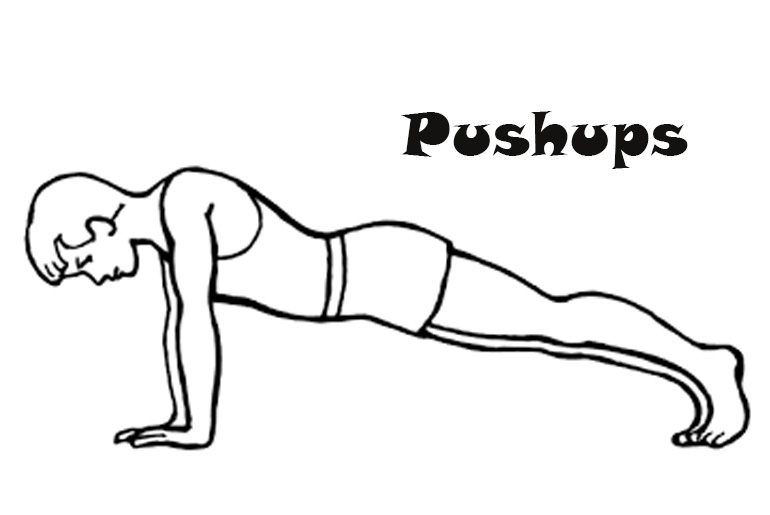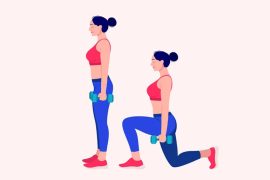Daily pushups are a simple yet effective exercise for enhancing upper body strength and overall fitness. Incorporating pushups into your daily routine helps strengthen muscles in the chest, shoulders, triceps, and core, promoting better posture and stability. This exercise also improves cardiovascular health and endurance while requiring minimal equipment, making it accessible for people of varying fitness levels. Pushups can be adapted by adjusting hand placement or incorporating variations like incline or decline pushups to target different muscle groups. Regular practice not only builds physical strength but also boosts mental resilience and discipline, reinforcing the importance of consistent exercise for long-term health and well-being.
Beginner’s guide to performing pushups effectively:
- Begin in a plank position with your hands slightly wider than shoulder-width apart. Your wrists should be aligned with your shoulders, and your body should form a straight line from head to heels. This plank position engages your core muscles for stability.
- Engage your core by drawing your navel toward your spine. This helps to stabilize your body and prevents your lower back from sagging during the movement.
- Inhale as you lower your body toward the floor and exhale as you push back up. Focusing on your breath not only enhances mindfulness but also helps you maintain a steady rhythm throughout the exercise.
- Keep your elbows close to your body as you lower yourself down. This protects your shoulder joints and effectively engages your triceps and chest muscles. Avoid letting your elbows flare out to the sides.
- Lower your chest to a point where it is just above or lightly touching the ground. This full range of motion ensures full activation of the chest muscles. It’s crucial not to compromise your form for depth, especially as a beginner.
- Maintain a neutral head position by looking at a spot on the floor about a foot in front of you. This aligns your spine and reduces strain on your neck throughout the exercise.
- Throughout the movement, focus on engaging your chest, triceps, and core muscles. This intentional muscle engagement maximizes the effectiveness of each repetition.
- Perform pushups with control, avoiding rapid or jerky movements. Controlled movements not only reduce the risk of injury but also maximize muscle activation and strength gains over time.
Things to keep in mind when practicing pushups:
- Progress Gradually: Start with a manageable number of pushups that challenge you without compromising your form. Gradually increase the number of repetitions or sets as your strength improves over time. Consistency in practice is more beneficial than attempting maximum repetitions right away.
- Listen to Your Body: Pay attention to any discomfort or pain, especially in your joints. If you experience pain, stop immediately and reassess your form. Differentiate between muscle fatigue, which is normal during exercise, and improper mechanics that can lead to injuries. Adjust your technique as needed to ensure safe and effective workouts.
- Quality Over Quantity: Focus on maintaining proper form throughout each push-up rather than aiming for a high number of repetitions. Proper form ensures that you’re targeting the intended muscles effectively while reducing the risk of injury. As you build strength and endurance, quality repetitions will yield better long-term results than rushing through improper ones.
- Breathing Awareness: Coordinate your breathing with your movements. Inhale as you lower your body towards the floor and exhale as you push back up. This not only helps maintain a steady rhythm but also enhances mindfulness during your workout.
- Rest and Recovery: Allow adequate rest and recovery time between push-up sessions to allow your muscles to repair and strengthen. Overtraining can lead to fatigue and increased risk of injury, so listen to your body’s need for rest.
- Variety and Progression: As you become comfortable with basic pushups, consider exploring different variations (e.g., incline pushups, diamond pushups) to challenge your muscles in new ways. Progression in difficulty will help you continue to improve your strength and fitness levels.
- Warm-Up and Cool Down: Warm-up with dynamic stretches or light cardio before your push-up workout to increase blood flow to your muscles and prepare them for exercise. After your workout, cool down with static stretches to promote flexibility and reduce muscle soreness.
Key benefits of incorporating push-ups:
- Strengthens Upper Body Muscles: Push-ups primarily target the muscles of the chest, shoulders (deltoids), and triceps. They also engage the muscles of the core, including the abdominals and lower back, as stabilizers during the movement.
- Improves Core Stability: Performing pushups requires maintaining a plank-like position, which activates and strengthens the core muscles. This helps improve overall stability and posture.
- Requires No Equipment: Pushups are a convenient and effective bodyweight exercise that can be done anywhere without the need for special equipment. They are accessible for people of all fitness levels.
- Increases Functional Strength: By engaging multiple muscle groups simultaneously, push-ups improve functional strength that translates into everyday activities and sports performance.
- Enhances Muscle Endurance: Regularly performing push-ups increases muscular endurance in the chest, shoulders, and arms, allowing you to sustain physical activities for longer periods.
- Promotes Cardiovascular Health: Push-ups elevate your heart rate during the exercise, contributing to cardiovascular conditioning and improving overall heart health.
- Can Be Modified for Different Fitness Levels: Push-ups can be modified to suit different fitness levels and goals. Variations such as incline push-ups, knee push-ups, or diamond push-ups allow beginners to progress gradually and challenge more advanced individuals.
- Improves Bone Health: Weight-bearing exercises like push-ups help strengthen bones and reduce the risk of osteoporosis later in life.
- Enhances Mental Health: Like any exercise, push-ups release endorphins (feel-good hormones) that can help reduce stress, anxiety, and improve mood.
- Contributes to Weight Management: Regular physical activity such as push-ups can aid in weight management by burning calories and building lean muscle mass, which boosts metabolism.
Considerations for Safe Push-Up Practice:
- Recent Injury: If you have recently injured your shoulders, wrists, elbows, or any part of your upper body, it’s essential to allow time for proper healing before engaging in exercises like push-ups. Pushing through pain or attempting push-ups too soon can worsen the injury or delay recovery.
- Chronic Shoulder or Wrist Pain: Individuals with chronic conditions such as shoulder impingement syndrome, rotator cuff injuries, or wrist issues (e.g., carpal tunnel syndrome) should consult with a healthcare professional before performing push-ups. Depending on the severity and nature of the condition, modifications or alternative exercises may be recommended to avoid exacerbating symptoms.
- Joint Instability: If you have joint instability, such as hypermobility or laxity in the shoulders or wrists, performing pushups without proper form and control can increase the risk of injury. Strengthening exercises to stabilize the joints may be necessary before incorporating push-ups into your routine.
- Recent Surgery: Individuals who have undergone recent surgery, particularly on the upper body or abdominal region, should follow their surgeon or physical therapist’s guidelines regarding exercise progression and avoid activities like pushups until cleared for more strenuous activities.
- Severe Back Problems: While push-ups primarily target the upper body, they also engage the core and lower back muscles for stabilization. Individuals with severe back problems or spinal conditions should exercise caution with pushups to avoid exacerbating their condition. Alternative exercises that place less stress on the spine may be more suitable.
- Overtraining and Recovery: Like any exercise, overtraining with push-ups can lead to muscle fatigue, decreased performance, and increased risk of injury. Adequate rest and recovery between workouts are crucial to allow muscles to repair and strengthen properly.
- Pregnancy: Pregnant individuals should consult with their healthcare provider before performing push-ups, especially as pregnancy progresses. Modifications or alternative exercises may be necessary to accommodate changes in balance, center of gravity, and physical condition.
- Medical Conditions: People with certain medical conditions such as cardiovascular issues, high blood pressure, or other chronic illnesses should seek guidance from a healthcare provider before starting or intensifying a workout regimen that includes push-ups.
Ultimately, it’s important to listen to your body, start gradually, and seek advice from a qualified healthcare or fitness professional if you have any concerns or underlying health conditions. They can provide personalized guidance and recommend suitable modifications or alternatives to ensure safe and effective exercise participation.
Disclaimer:
The information contained in this article is for educational and informational purposes only and is not intended as a health advice. We would ask you to consult a qualified professional or medical expert to gain additional knowledge before you choose to consume any product or perform any exercise.







